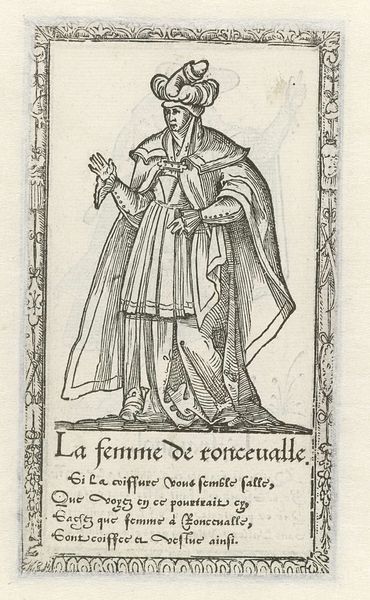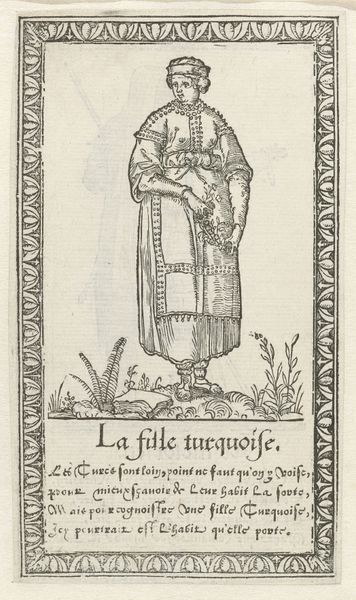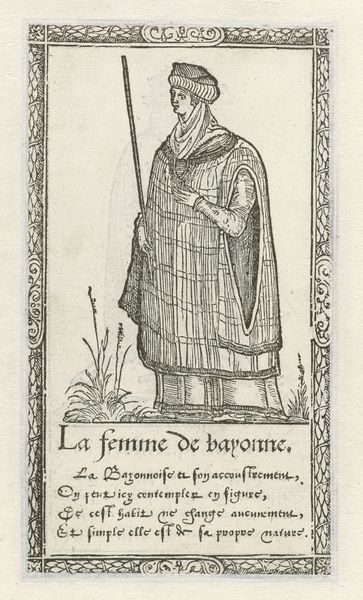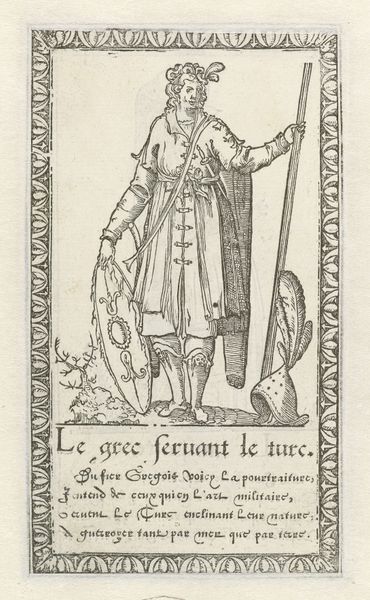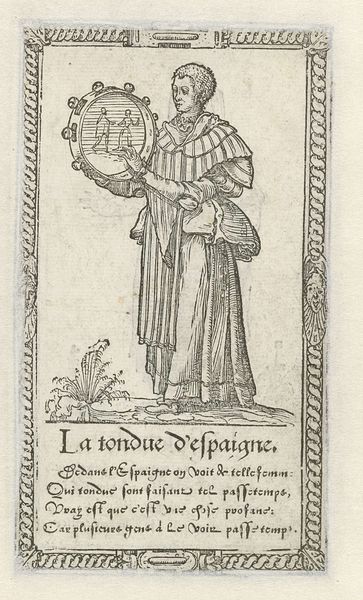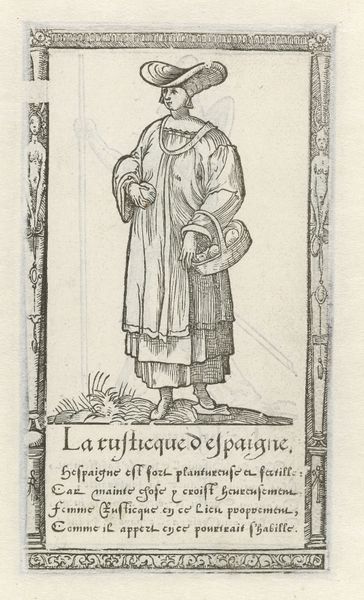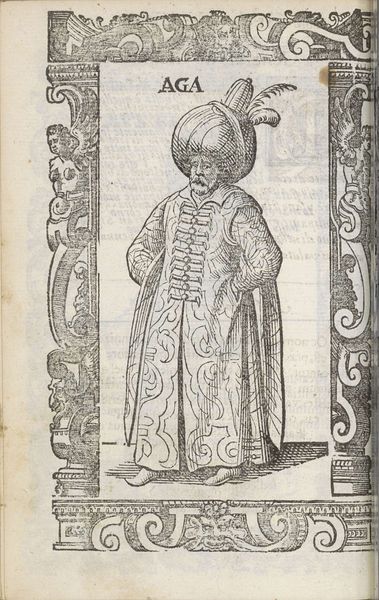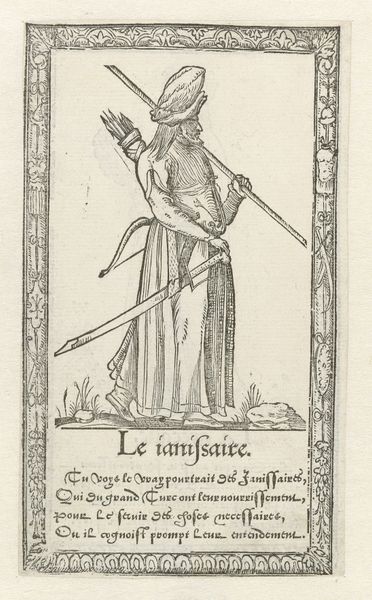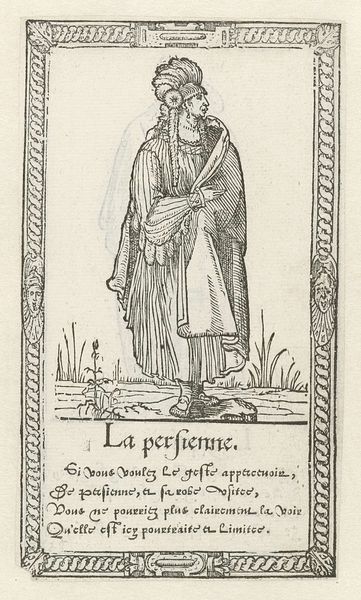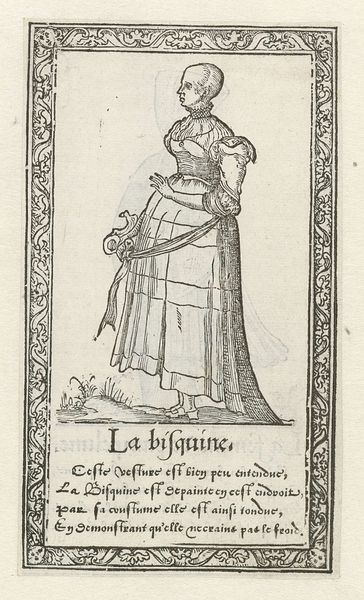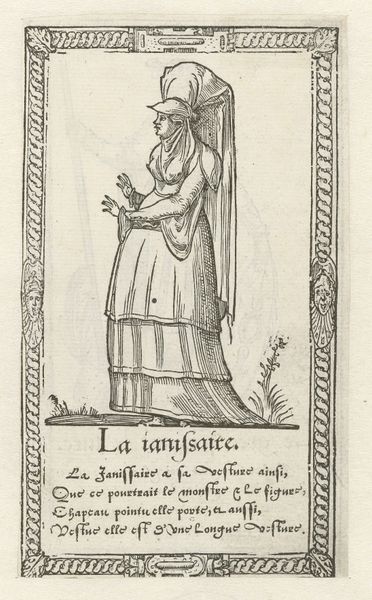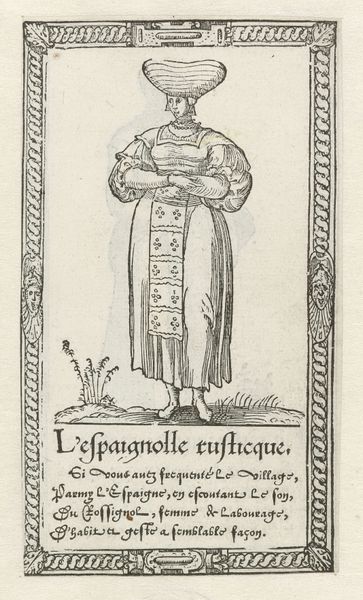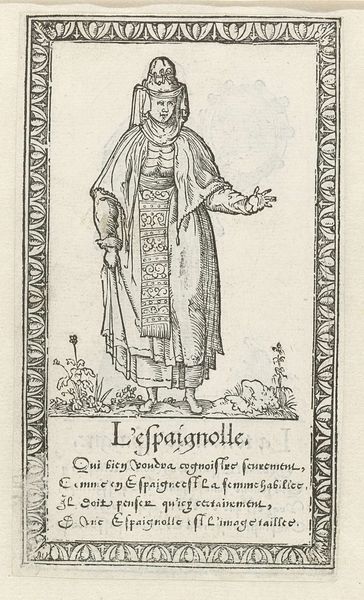
print, engraving
#
portrait
# print
#
figuration
#
genre-painting
#
history-painting
#
northern-renaissance
#
academic-art
#
engraving
Dimensions: height 145 mm, width 85 mm
Copyright: Rijks Museum: Open Domain
Curator: This small engraving, created in 1562 by François Desprez, is titled "Vrouw in de klederdracht van Pamplona"—"Woman in the clothing of Pamplona." Editor: The immediate impression I get is one of austere formality. There's a solemn quality to the woman's posture and the severe lines of her dress, even though the details in the border provide some relief from the general simplicity. Curator: Indeed. This print exemplifies the Northern Renaissance interest in capturing distinct cultural identities. The costume, particularly the distinctive headwear, is the primary focus. It’s both an attempt to record, and, perhaps, to exoticize regional dress. Consider that dress in that time served as not only functional but to also indicate social standings, class, and/or regional heritage. Editor: Exactly. And it’s important to acknowledge how the representation of these “types,” these genre paintings were almost always filtered through the lens of the artist's own cultural perspective. Is this "authentic" representation or something created for a very particular patron or audience in mind? Also, one wonders how this image circulated and in what spaces—how the public engaged with it. Curator: It reminds us that notions of “authenticity” in visual representation are always fraught. Let’s also think about the gendered aspects. While the artwork focuses on the details of dress, is there room to explore how patriarchal standards and the socio-economic roles ascribed to women impacted even fashion of the day? The tall headdress suggests societal standards; what impact did expectations and customs play in defining female representation? Editor: Certainly. These prints, while seemingly documentary, always operated within power structures that determined what and how cultures were represented. What a reminder that art offers insights into societal biases! Curator: Precisely. These prints are powerful for not just what they depict but the contexts that led to their creation. Editor: Thank you, curator. Examining how institutional forces, artistic intentions, and contemporary lenses contribute to a modern and thorough viewing of art has been really eye-opening!
Comments
No comments
Be the first to comment and join the conversation on the ultimate creative platform.
